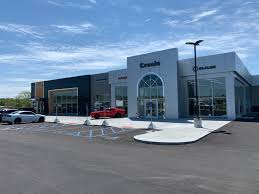Efficient cash flow management is crucial for the success of any business, particularly for convenience stores that deal with high-volume, low-margin sales. Optimizing cash flow requires not only a keen eye on expenses but also a proactive approach to sales and inventory management. This is where leveraging EPoS (Electronic Point of Sale) systems in the UK comes into play. A robust retail POS system provides real-time data, helping convenience stores streamline their financial planning and maximize profitability.
Understanding Cash Flow in Convenience Stores
Cash flow represents the net amount of money moving in and out of a business. For convenience stores, managing this effectively can be tricky due to fluctuating customer demand, inventory costs, and operational expenses. Businesses need to ensure that they have enough cash to cover daily expenses like payroll, rent, and utilities while also maintaining sufficient stock to meet customer demand.
However, cash flow isn’t just about managing day-to-day expenses; it’s about strategic financial planning. Optimizing cash flow can enable a store to expand, invest in new technologies, or even weather economic downturns.
Role of EPoS Systems in Cash Flow Optimization
The POS system serves as the backbone of daily store operations, offering far more than just a way to process transactions. Advanced retail POS systems collect vital data on sales, inventory, and customer behavior, which can be analyzed to improve decision-making and optimize cash flow.
Here’s how convenience stores can leverage their POS data for better financial planning:
1. Real-Time Sales Data for Improved Inventory Management
One of the primary benefits of a retail POS system is its ability to provide real-time sales data. This allows convenience store owners to monitor which products are selling the most and which are underperforming.
By identifying fast-moving items and adjusting stock levels accordingly, businesses can avoid overstocking slow-moving products that tie up capital and occupy valuable shelf space. Conversely, they can ensure popular items are always in stock, improving sales and customer satisfaction.
2. Forecasting Demand with Historical Sales Data
A robust EPoS system stores historical sales data, enabling businesses to forecast demand based on past trends. For instance, if certain products sell better during specific seasons or holidays, convenience stores can prepare in advance by adjusting their inventory and staffing levels.
This predictive capability allows for more strategic purchasing and reduces the likelihood of over-ordering or under-ordering, both of which can harm cash flow. Optimized stock levels mean less money is tied up in unsold inventory, leading to better liquidity and financial health.
3. Cash Flow Tracking and Reporting
Modern retail POS systems offer comprehensive cash flow tracking and reporting tools. These features give store owners a clear overview of their daily, weekly, and monthly cash flow. By identifying patterns, such as peak sales periods or times when cash flow dips, store owners can adjust their financial planning accordingly.
These reports can also highlight operational inefficiencies, such as areas where costs could be reduced, which further aids in optimizing cash flow. Additionally, by integrating your EPoS system with accounting software, you can automate cash flow reporting, saving time and reducing errors.
4. Better Supplier Management
EPoS systems can also assist in managing supplier relationships by providing detailed insights into the profitability of each product category. This data allows business owners to negotiate better deals with suppliers or even change suppliers if certain products aren’t yielding desired profit margins.
By tracking supplier payment schedules alongside your cash flow, you can ensure timely payments without causing a strain on your financial resources. This not only optimizes cash flow but also strengthens supplier relationships, potentially leading to better payment terms.
5. Customer Behavior Insights for Targeted Marketing
Another crucial benefit of EPoS systems in UK convenience stores is the ability to collect data on customer preferences and buying patterns. By analyzing this data, stores can create targeted marketing campaigns to boost sales during slow periods. For instance, if a certain customer segment tends to purchase certain products in bulk, special promotions or loyalty programs can be designed to attract repeat business.
This helps to smooth out revenue fluctuations, improving cash flow predictability. With a more stable cash flow, financial planning becomes easier and more accurate.
6. Employee Productivity and Scheduling
A retail POS system can also monitor employee performance, tracking transaction times and sales per employee. This data is invaluable when it comes to scheduling, ensuring that the store is neither understaffed during busy times nor overstaffed during slow periods.
By optimizing staffing levels, convenience stores can reduce labor costs without sacrificing service quality, contributing positively to cash flow management.
Choosing the Right Retail POS System for Your Store
To fully leverage POS data for cash flow optimization, it’s essential to choose the right system tailored to your business needs. Look for an EPoS system in the UK that offers:
- Real-time inventory and sales tracking
- Comprehensive reporting tools
- Integration with accounting software
- Scalability to grow with your business
- User-friendly interface for staff training and operational efficiency
By investing in a POS system that provides valuable insights, convenience store owners can make more informed financial decisions, leading to optimized cash flow and long-term financial stability.
Conclusion
Leveraging the power of a modern retail POS system can revolutionize cash flow management in convenience stores. By providing real-time data on sales, inventory, and customer behavior, an EPoS system in the UK enables store owners to make informed decisions, improve financial planning, and ultimately enhance profitability.
With accurate cash flow forecasting, better inventory management, and targeted marketing efforts, convenience stores can create a more sustainable business model and prepare for future growth. Investing in the right POS system is not just about processing payments—it’s about using data to secure the financial future of your business.

